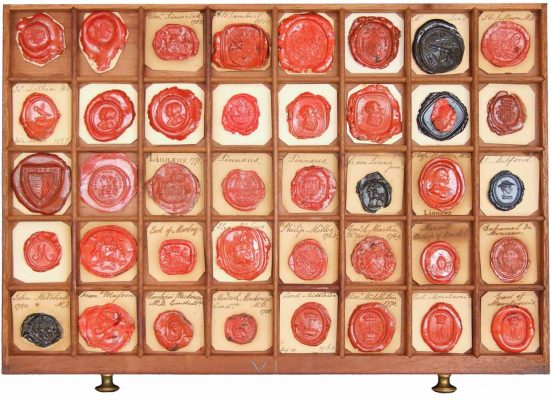Acts of Infidelity is the second novel by Lena Andersson that follows unlucky-in-love heroine Ester Nilsson, and it’s another scalpel-sharp look at a doomed relationship. In Wilful Disregard (2013), Andersson showed – in excruciating detail – the drawn-out decline of a love affair where one person is ambivalent and the other is wholly in love; here, we get an equally unflinching look at Ester’s involvement with a married man. It is very much a standalone book, although there are echoes of Wilful Disregard throughout; I was overjoyed to be reunited with the funny, intelligent Ester and curious to see whether she had learnt anything from her previous relationship (with Hugo Rask, an artist who spent the entirety of Wilful Disregard blowing hot and cold), only to recognise quickly that she had not. It would be tempting and satisfying in a book to steer the characters away from their past mistakes, to make them do things differently this time – but in real life people don’t necessarily learn, not when it comes to matters of the heart.
Ester is an intimidatingly clever person, someone who has dedicated her life to understanding and recording the world around her intensely through writing and theorising. And yet, when it comes to men, she has a particular blind spot. Her intelligence, in a way, is her undoing; it gives her the capacity to self-deceive endlessly, to analyse even the smallest situations and find them, somehow, hopeful. Olof fails to send her a text message on the first New Year’s Eve that they’re a couple, an act which Ester interprets a sign of him being emotionally overwhelmed by his feelings for her, unable to condense them in a mere text. With her friends – styled as the anonymous ‘girlfriend chorus’ in Wilful Disregard, but here fleshed out more as individuals each with their own approach to The Problem of Olof (and to love more generally) – Ester is able to analyse and re-analyse in a way that’s both absurd and also painfully familiar to anyone who’s ever been there.
As the observers of this unromantic romance, we are able to see Olof much more clearly than Ester herself does. He’s a married actor – dishevelled, passive, and on countless occasions cruel to Ester, a cruelty that oscillates from the careless to the emotionally sadistic within a single conversation. She buys a car in order to drive him around, spends money on new clothes that he mocks, and which she ends up hating. She buys expensive boots for a romantic mountain getaway where Olof treats her with disdain; the boots rub her feet so badly that, on getting home, she never wears them again. They are unsuitable. But it’s not easy for her to accept that Olof is unsuitable – yet why?
Which brings me to one of the key joys (if something so painful can be termed a joy) of this novel – its detailed dissection of a relationship’s dynamics and power-plays. From our vantage point on the outside we can see the subtle, complex strings with which Olof manipulates Ester. We are in the uncomfortable position of dramatic irony, witness to her feelings but also able to see what’s happening with total clarity.
These dynamics are perfectly encapsulated in the theory of ‘accounting’ that Ester proposes. She tells Olof that every individual opens an account of ‘relationship capital’ when they embark on a relationship with another person. When Olof’s account is full, he turns up late for their dates or cancels, he is scruffy and unwashed, he talks about his wife. These actions are ‘withdrawals’; they push Ester away from him, transfer capital from his account to hers. When his balance is low, she has a degree of power. But due to the nature of the imbalance in feelings between them, this state of affairs doesn’t last long; usually as long as it takes for Ester to feel happy and secure again about their relationship, at which point Olof’s account returns to full health, and the cycle begins once more.
Ester’s theories stem from her habit of approaching her doomed love affairs as just another strand in her intellectual life, a field of study as valid as poetry or philosophy. We see an increasing intellectualising of her attitude towards these liaisons – she is a student of the heart – because in that way Ester can make them justifiable, and ensure that her waste of time and energy is justifiable too. At one point, a frustrated friend exclaims to Ester, ‘Why don’t you use that sense of reason you’re so proud of?’ And why doesn’t she – this woman who is absolutely no fool except when it comes to Olof Sten? It is reassuring in a way, this acknowledgement that none of us are immune to love’s hysteria.
I am trying to think why these novels have connected so hard with women that I know, and I think that it’s Andersson’s treating of these intense emotional states with gravity and worth – emotional states that are so often gendered, or dismissed flippantly. Ester just wants to understand the whole world, but love is the last thing to remain maddeningly obtuse. As much as she tries, as helpful as it would be, there is no formula, no real theory that can be applied here. Or there is the simplest theory of all. As her friend Elin bluntly puts it at one point: ‘Ester might just have met a real shit.’
The narration throughout is cool and impartial, the prose razor-sharp and precise. Every other sentence begs to be underlined, reveals an uncomfortable nugget of truth. The affair spans seasons and years, the rhythm of the relationship uneasily settling into repetitiveness. Summer is a time for Olof and the wife; winter marks the season of the mistress. Again and again Olof breaks up with Ester, only to get back in touch a few weeks later. The repetition itself becomes a narrative technique. We are pulled along the whole sorry saga with Ester, from dizzying beginning to acrimonious end; it wears on us as much as it wears on her, as we grow to anticipate Olof’s patterns.
To Ester, the years detailed in the book make up her great love story. To Olof she is alternately a distraction and a harpy seeking to destroy his life, depending on the amount of credit in his account. Lena Andersson’s novels skewer in particular a certain kind of older man in liberal and creative circles, the kind of man accustomed to adoration – men who keep their options open and who fail to take any kind of responsibility for their actions – with devastating clarity and insight.
When a man performs longing, in literature or otherwise, it is seen as somehow noble. When a woman performs longing she’s too often seen as hysterical, unstable, the shrew of Olof’s imagination. But in Acts of Infidelity, Andersson is not afraid to delve properly into the histrionic depths of a crush. The contents of messages, the small and large humiliations Ester puts herself through, the misunderstandings — all are treated with seriousness, even if the eye observing them is wry. Lena Andersson is spot-on when it comes to stripping these interactions back from the mystery in which it’s so easy to shroud love; and her directness, the attention paid when writing about infatuations so often seen as undeniably female, as lesser, is radical too.




